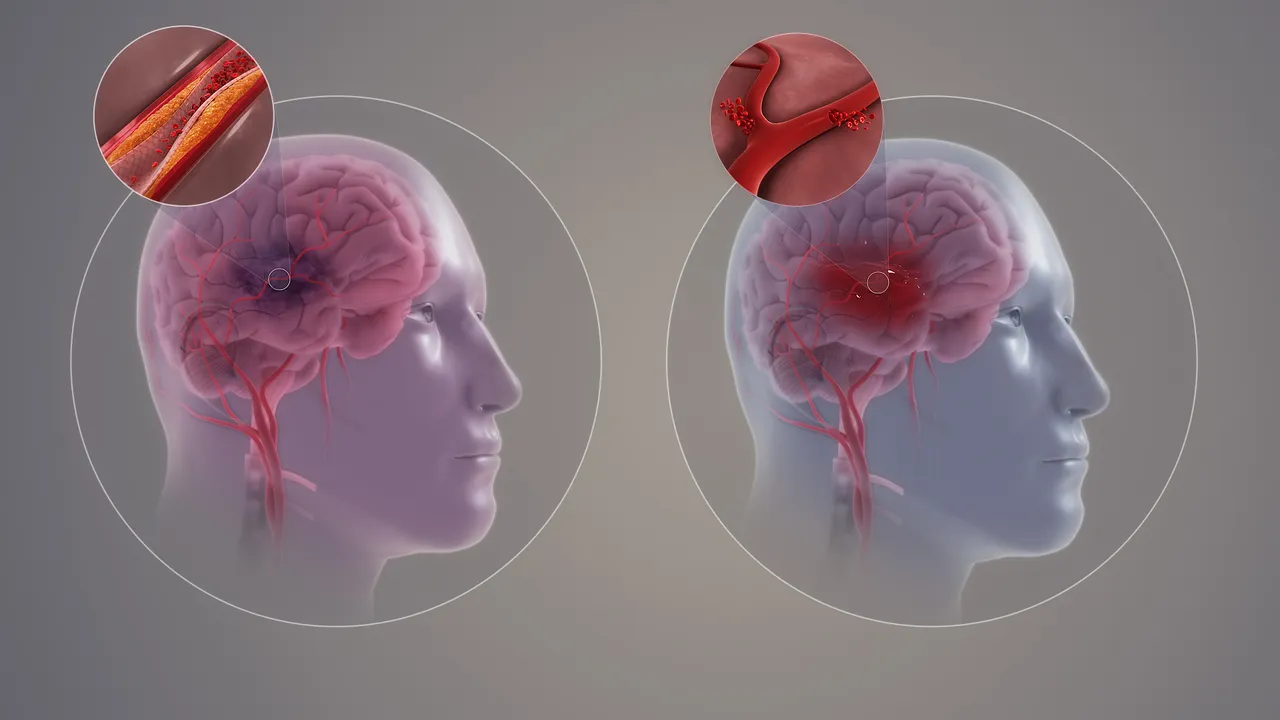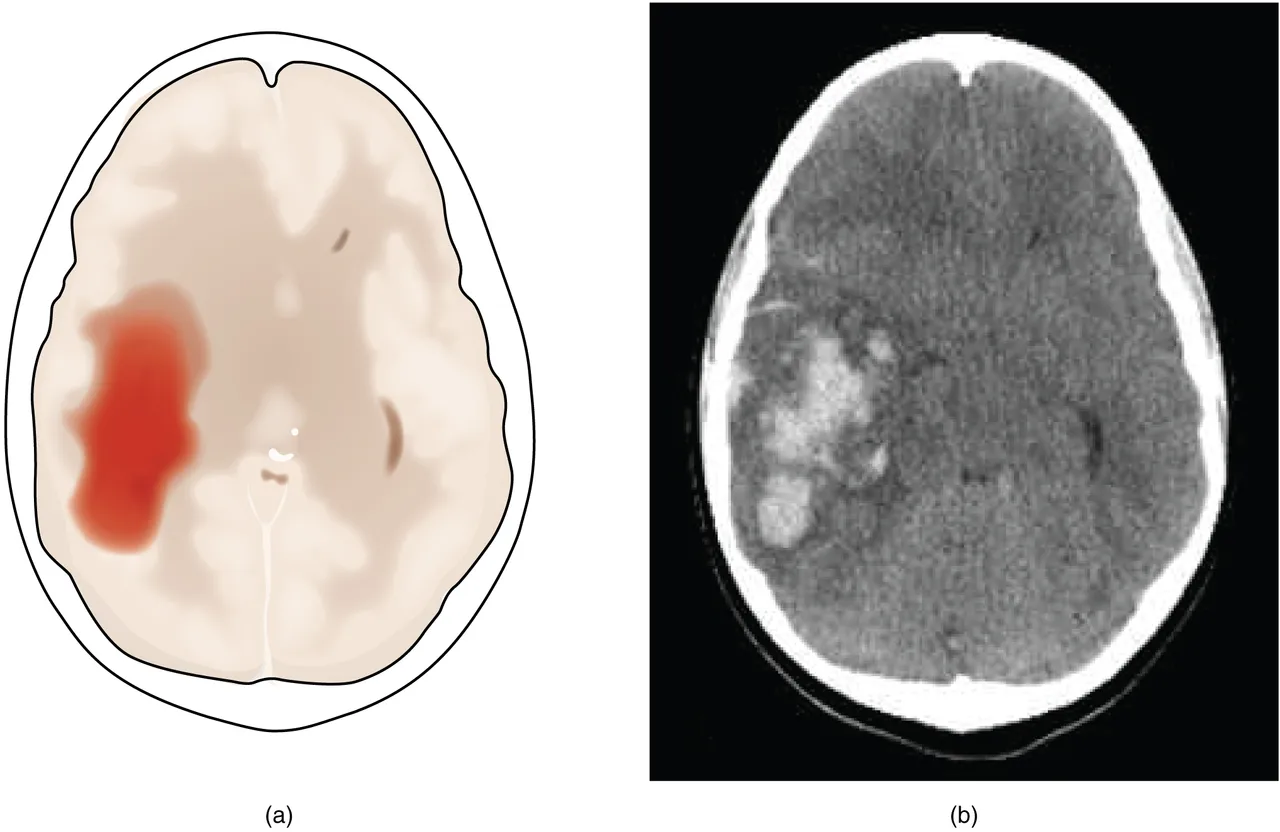Stroke!! You must have heard this word before, or maybe you know someone who has stroke? World Stroke Organization announced in 2022, that stroke is the second-leading cause of death worldwide, and the World Health Organization confirmed that not less than 15 million people suffer from stroke annually, not leaving that it affects up to 8% of children with sickle cell disease. This is a very large number for it to raise concern, so I started asking myself questions like [is there a possibility that I have stroke?, what could cause stroke? Which gender is likely to get stroke, and what research is available currently?].
I remembered that a friend lost her father to stroke, and what was surprising was the way it happened. It was like he had been struck by electricity or lightning, which killed the left side of his body. He couldn't talk, he looked very confused (like his brain wasn't able to analyze anything), not also forgetting that he was paralyzed in the left region of his body. They were able to manage it for a few years, which made him become a burden to the family. With treatment, he looked like he started regaining himself as he could talk but not clearly, and he was recovering gradually from his paralysis, but he died at the end (which I couldn't tell the difference, if it was a loss or a relief to the family).
Confession My fear for the event above, was what got me to research this. Hey!!! don't get me wrong, I am not going to have a stroke.
One Common, and One Less Common

Stroke is the general name, but there are two ways in which people could get stroke. These two ways give rise to two categories of stroke, which are the Ischemic Stroke and hemorrhagic Stroke.
Ischemic Stroke according to CDC makes up about 87% of people with stroke, making it very common. With Ischemic Stroke, Blood stops going to the brain as a result of a blocked artery.
Hemorrhagic Stroke as the name implies is a break in the blood vessels that transport blood to the brain. This causes blood to surround the brain to come in contact with brain tissues. NCBI says that it is responsible for 10 -15% of stroke patients.
Simple anatomy of Blood Circulation to the brain
The left ventricle usually pumps blood into the aorta, which then transports the blood through the carotid arteries (external and internal coratid arteries). The internal coratid arteries splits to form the anterior cerebral arteries, and middle cerebral arteries. The anterior cerebral arteries supplies blood to the frontal lobe, the middle cerebral arteries supplies blood to the lateral frontal lobe, the temporal lobe, and the parietal lobe.In Posterior Circulation, blood is supplied to the posterior cerebral arteries, the midbrain, and the Brainstem. (https://www.ncbi.nlm.nih.gov/books/NBK11042/)
Moving forward, Ischemic Stroke can come be in forms of transient ischemic attack (TIA), also known as mini stroke, which doesn't last more than 24 hours, where the brain doesn't receive enough oxygen as a result of reduced inflow of blood from the vessel to the brain. There is no breakage in the blood vessel and, as the name implies, patient have transient episodes. Another form is the Acute ischemic stroke which occurs, as a result of a clot in the vessel transporting blood to the brain. This is a severe type of stroke, and can lead to death.
Ischemic strokes occurrence could be Hypoxic, Embolic, and Thrombotic.
Hypoxic causes, which occurs from reduced blood flow to the brain as a result of situations such as cardiac arrest, respiratory failure, or shock.
Embolic causes, arises from a clot being stuck in the blood vessel to the brain. This could be Cardioembolic, arising from atrial fibrillation, cardiac tumors, paradoxical emboli and so on.
Thrombotic causes, which always arise from the presence of plaques present along the large arteries (such as vertebral arteries) which supplies blood to the brain. Smoking, high blood pressure, diabetes, and high cholesterol are risk factors to having these plaques.
Do not forget that in the above forms and causes of Ischemic stroke, there is no break in arteries which could lead to bleeding.

Hemorrhagic Stroke would include;
Intracerebral/Intracranial Hemorrhage which is a break leading to a bleed in the brain tissue. Intracerebral Hemorrhage can be caused by hypertension, Cerebral amyloid angiopathy (CAA), Trauma, Coagulopathy, Hemoptysis, and so on.
Subarachnoid hemorrhage which is a bleed around the tissue (subarachnoid space) of the brain. This could occur as a result of breaks from cerebral aneurysm, weakened brain tissue walls, and arteriovenous malformation.
Unlike Ischemic Stroke, Hemorrhagic stroke as the name implies involves rupturing of the vessels that carrying blood in the brain. It is not a common type of stroke.
There are Stroke Syndromes
Either a rupture or a blockage, the area at which the blood vessel is headed to determine the Syndromes. If you read carefully, the code boxes in the post, you should be able to relate with this. The syndromes are;
Anterior cerebral arteries (ACA) syndrome, which will include contralateral hemiparesis and weakness, and contralateral sensory loss, leading to the decrease in movement control, and Abulia (which causes reduced motivation to do anything including communication)
Middle cerebral arteries (MCA) syndrome, has to do with loss of strength in the face region, as a result of the stroke. Also, eye movement would be affected, as well as expressions would be less to zero.
Internal carotid arteries (ICA) syndrome, could look like the MCA and ACA, also, patients with ICA stroke could have vision loss which if not treated could lead to permanent blindness.
Posterior cerebral artery (PCA) syndrome, affects the Occipital lobe since the vessel transport blood to this region, thereby causing visual loss, as well as the Temporal lobe which helps in retention as well as identifying, The thalamus and the midbrain, which helps relay sensory signals such as sleeping, cautiousness, and being alert, and the upper brainstem which connects the cerebrum and spinal cord together.
Having PCA stroke could lead to death if not treated as it affects a large part of the brain which send signals to other part of the body to function properly.
Is it a Death Sentence
While stroke is the second-leading cause of death worldwide, it could still be handled, depending on few factors which includes; the age of the Patient, Blood pressure of the patient, History of Stroke, Current part of the brain affected, diabetes, time of Stoke, and so on John Hopkins medicine. An article on National Institutes of Health, confirms the administration of Tissue Plasminogen Activator (TPA) intravenously for patients who just had stroke within 3 hours, with no hemorrhage. The TPA increases the fibrin concentration, which breaks down clotting. Other method of treatment would include Thrombectomy, which is a surgical operation allowing the removal of the cloth in the arteries. Also, Carotid endarterectomy is a surgical option which allows for the removal of plaques as well as. Other treatment methods includes; Transfemoral carotid artery stenting, and Transcarotid artery revascularization which allows for operations in cases of hemorrhage.
Conclusion
Stroke isn't one of the medical conditions where you decide to sit at home and self-medicate, it is an emergency case and should be treated as such. When there is a clot, plaque or hemorrhage in the artery, then tissues start to die, and the longer the time spent without treatment, the more complicated it becomes. I am still looking to understand why men are more liable to have stroke compared to women. As I continue my research, I will surely bring this to you.
Image reference
*Wikimedia.org || Types of Stroke
*Wikimedia.org || Hemorrhagic Stroke Image